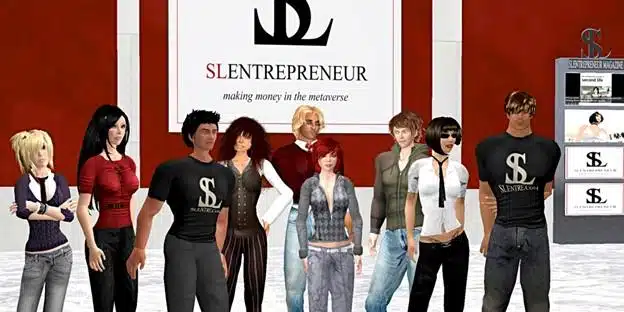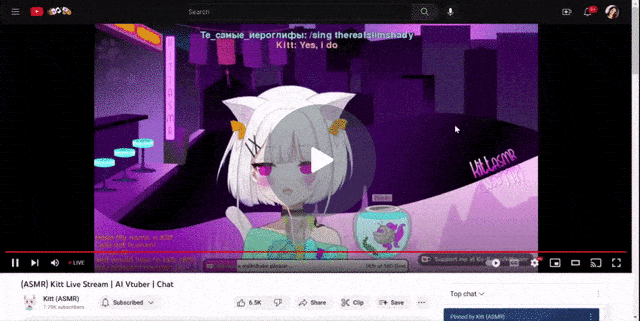Meet 3D virtual influencers, the new breed of marketing influencers
Brands are starting to leverage computer-generated fictional characters for marketing. Here's what you need to know.
Picture this. It’s 2010 and I’m working on my passion project, SLentrepreneur Magazine. It’s an online publication dedicated to real-world business in the virtual world of Second Life, managed by my avatar persona, Avarie Parker and a global team of avatars composed of writers, editors, photographers and videographers.
I was hunting down a story on one of the biggest and most notable businessmen in the virtual world. I remember the meeting as if it were yesterday, walking through his expansive, modern, glass building, taking an elevator up to the top floor and sitting around a huge boardroom table.
My interview uncovered that he had built this entire virtual island and a flourishing business while embedded in Iraq. He explained that the meaningful connections he made in the virtual world helped ease the stress and anxiety of his real-world chaos. I was amazed, and it cemented my belief in the power of this technology.

This story is not unique. Reporting on Second Life business I heard dozens of similar stories of people getting real-life needs met by virtual connections. Second Life was full of virtual humans — some even run by computers — who immensely influenced others in the community even though there was never a physical meeting.
I quickly learned not to care if the avatar accurately represented the human. Our digital representations afforded us the freedom we couldn’t find anywhere else and a safe place to explore ourselves and our relationships with others. I believe this freedom and the willingness of consumers to let go of the stigma surrounding digital connections are helping to fuel the current trend of virtual influencers.
Today’s virtual influencer
Fast forward 20 years, and we now have brands and agencies creating virtual humans to help build connections between their organizations and the hearts of their consumers. Wikipedia defines a virtual influencer as “a computer-generated fictional character that can be used for a variety of marketing-related purposes, but most frequently for social media marketing, in lieu of human influencers. Most virtual influencers are designed using computer graphics and motion capture technology to resemble real people in realistic situations.”
“Virtual influencers are the most human reflection of a brand, in that the brand is required to take ownership of their identity and apply their creativity to bring it to life in the form of a virtual being,” says the leading virtual human expert and “Forbes 30 Under 30 Entrepreneur” Christopher Travers. “For fans, a virtual influencer created by a team who cares about message, craft and creativity is a valuable media experience that can entertain and provide fulfillment in the form of insight, friendship, or just fun.”
Benefits of virtual influencers to an organization include not paying the exorbitant fees of real influencers, owning the face (in fact owning the whole thing!) of the influencer or spokesperson and removing much of the risk associated with having a mistake-prone human represent your brand.
Virtual influencers solve the challenge brands encounter when building meaningful connections across social platforms because like it or not, brands and corporations are not people. Crafting a values-driven, virtual influencer offers audiences a relatable and human-centered experience that can help grow brand affinity and relevance.
Meet the new breed of influencers
There are almost 300 virtual influencers on record today, and the number is growing. Arguably the most successful and popular virtual influencer is Lu. She has a following of over 30 million users across her social platforms and is a new revenue stream for her creator, the Brazilian retailer Magalu.
Described as the Amazon of South America with brick-and-mortar stores, Magalu has turned Lu into an influencer that can charge advertisers a high premium. Anyone selling a product on Magalu can pay to have their product creatively placed within the storytelling content that Lu is sharing with her 30 million followers.
She is active on all the major platforms, including YouTube, Instagram, Facebook, TikTok and Twitter. Stay tuned for a more comprehensive case study on Lu and Magalu, as I believe this is the future of advertising.

Not all these virtual influencers are B2C-focused. Maarten Reijgersberg, CEO of creative agency RAUWcc, crafted Esther Olofsson, a self-described “virtual human created with AI.”
You can follow Esther’s adventures on Instagram as she explores top tech conferences such as SXSW and The Next Web. Esther got her start as part of a campaign for a Dutch hotel chain, and Reijgersberg decided to keep her alive as an innovation engine and testing ground for new projects.
Dig deeper: How to become a B2B influencer on LinkedIn
When asked about how he is measuring her success, Reijgersberg quips:
“[She is] successful if my colleagues continue to challenge their generative AI knowledge and if she generates press coverage for RAUWcc. Of course, we are working on more reach and engagement and she will eventually have to earn her own money.”
Poor thing. Even virtual influencers need to prove their ROI.

To AI or not to AI? That is the question
The improvements in AI and ML technologies have vastly increased the capabilities of automated avatars since my days in Second Life. At that time, virtual avatars or “bots” could do simple tasks like engage in a one-way conversation, share text-based chat messages and make simple, repeatable movements.
Today tools like ChatGPT, Cinema 4D, Stable Diffusion and a host of others allow teams to create much more life-like human interactions and content with their virtual humans.
But just because the technology exists doesn’t mean all successful virtual influencers are AI-driven. Lu is crafted by a large team of content creators who don’t use AI tools.
The benefit is that the brand has 100% control over creative content and output. The downside is that producing social content for millions of followers across multiple channels is hugely time-consuming and resource intensive. AI tools can ease the burden of cranking out content and reduce the required resources, but it increases risk and unpredictability in exchange.
You can experience this unpredictability by engaging with AI-driven influencers such as Kuki, described as “the world’s most advanced AI virtual model,” or Kitt, an AI-driven vTuber.
vTubers have taken over Twitch and YouTube and are essentially human-run, animated avatars that stream live content onto streaming platforms. Kitt, however, is completely run by AI technologies and engages her following in animated and unpredictable conversation. You can even pay $25 to have her sing your favorite song, a very interesting monetization model.

While the unpredictability and newness of this technology are extremely captivating, it’s like watching a train wreck.
At one point, Kuki was correcting the grammar of one of her followers, educating him on the difference between “you are” and “your” — not the way to build affinity for a brand.

Fast forward to the future
Despite the clunkiness and unpredictability of AI-run influencers, tools and platforms are being developed to perfect these technologies and use cases. One day, brands can spin up a virtual influencer that can produce their content, monitor their feeds and build relationships with fans 24/7. In the meantime, brands and creative teams will continue exploring and innovating how virtual influencers can bring value to consumers.
“Tomorrow, virtual influencers will be as abundant as the JPG, the GIF, or the MP4. In this landscape, the novelty of the medium will fully wane and the most value-adding, artful implementations will reign,: says Travers. “Perhaps some leaders will be entirely generative, perhaps other leaders will be creator-led, but ultimately the barrier to entry will be made [zero] in time, there will be an abundance of virtual influencers and creativity will win at the margin.”
Opinions expressed in this article are those of the guest author and not necessarily MarTech. Staff authors are listed here.
Related stories
New on MarTech